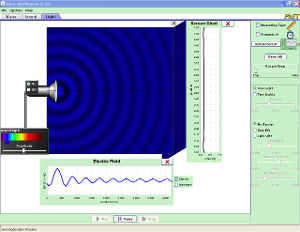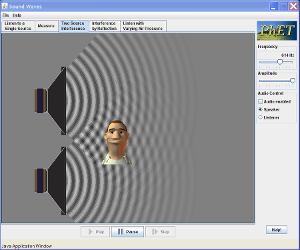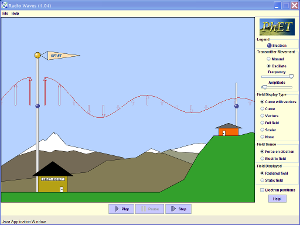Monday, January 26, 2015
- QOD: How do you think wave speed and frequency are different?
- I can: measure wavelength and amplitude as well as find the frequency.
- Lesson:
- Students will draw a chart in their journal that represent how much energy different waves contain
- Students will measure with a ruler the wavelength and amplitude of different waves. They will then use a calculator to find the frequency of the waves
- Early Finishers = Students will look up information about tsunamis and their relation to waves
- QOD: What frequencies do you think would be the hardest to hear and why?
- I can: accurately create a hearing response curve graph
- Lesson:
- Students will be given a survey on a paper provided by the STEMconnector.
- Students will go to a hearing response website to determine what pitch they can hear best and worst. Students will then create a hearing response graph for their own hearing and write a response about comparing theirs with their classmate
- QOD: How do you make the wave speed faster?
- I can: determine wave speed by manipulating the equation
- Lesson:
- Students will take notes about wave speed.
- https://www.youtube.com/watch?v=gbk6P5wJJRo
- http://education-portal.com/academy/lesson/vibrations-and-waves-wavelength-amplitude-period-frequency-speed.html
- Students will receive several examples of using the wave speed equation
- If the wavelength is 5 mm and the frequency is 7 Hz, what is the wave speed
- What is the Wave Speed of a wave that has a Wavelength of 2 meters and a Frequency of 6 Hz?
- Students will look at different musical notes and see how wavelength and amplitude are connected
- Students will be introduced to the concept of reflection by folding a paper in half and drawing a couple of shapes on one side. Students will switch with a partner and they have to draw the reflection
- QOD: What does each of the symbols represent in the wave speed equation?
- I can: define reflection, refraction, and diffraction
- Lesson:
- Students will be taking notes and drawing pictures representing the three vocabulary words: reflection, refraction, and diffraction
- Students will play Kahoot to review for their quiz on Friday over Wave Properties
Friday, January 30, 2015
- QOD: Draw a wave with a high amplitude and a long wavelength.
- I can: be proficient on the properties of waves and explain resonance & interference.
- Lesson:
- Students will be taking a quiz over wave properties.
- Students will be taking notes over three vocabulary words: interference, resonance, and standing waves.










